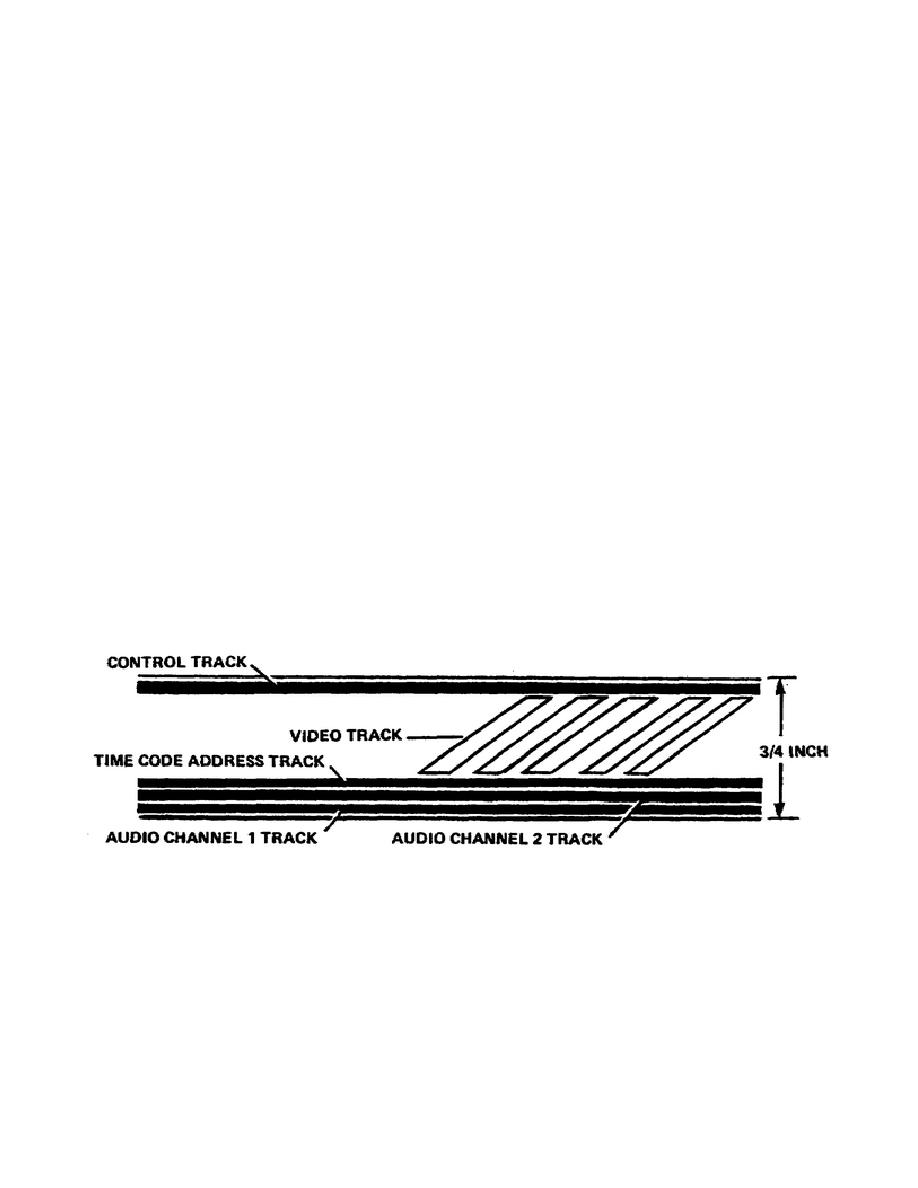
(1) The CART system is a large representation of the old audio 8-
track system which had a short life, due to the mechanical problems in the
CART machines. CART systems were designed for 2-inch machines and also for
the short-lived 1/2-inch system (1/2-inch home units).
(2) At the present there are two cassette systems used in the
broadcast industry, 3/4-inch UV and 1/2-inch beta systems. The 3/4-inch UV
is now a broadcast industry standard and is replacing the 2-inch reel tape
machines. The 3/4-inch still does not have the quality of the 2-inch but it
has enough to be broadcast standard tape, and be usable in the field for
ENG/EFP. Even though 3/4-inch tape has become a standard with ENG/EFP, 1/2-
inch beta has started a new revolution of the single camera recorder system,
called camcorders. The camcorder system brings a positive light to ENG/EFP
because of less equipment needed and the ability to broadcast quality
recordings.
d. Track arrangement refers to the arrangement of the audio, video, and
control tracks in a VR. Because of the great variety of helical VRs with
different tape formats, you will no longer find a standard arrangement of
the audio, control, and video tracks. Each format has its own arrangement
even within certain tape formats.
e. The system standard we are going to use is the 3/4-inch, which was
later called the U-Matic system. The U-Matic system is the single standard
for all of the more popular 3/4-inch VRs. Sometimes the system is simply
called the "U-system."
Cassettes recorded on the U-Matic VRs are all
interchangeable.
Besides the video track, the cassettes have two audio
channels, one address code track (which can be used as a third audio
channel), and a control track (fig 1-4).
Figure 1-4.
Track arrangement of 3/4-inch videotape system
f. Tape speeds vary greatly among the various systems. In general they
are slower than the 15 ips of the quad recorders. Most 3/4-inch cassettes
record and play back at a tape speed of 3.75 ips. These machines can play
back
6



 Previous Page
Previous Page
